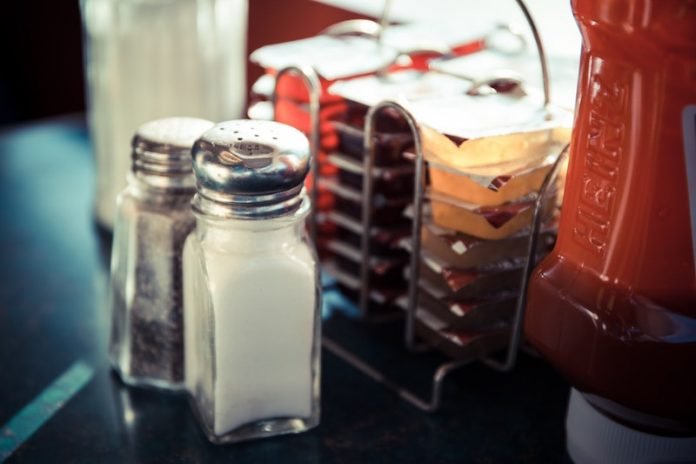
Learning about sodium in foods and exploring new ways to prepare foods can help you achieve your sodium goal.
And, if you follow these tips to reduce the amount of sodium you consume, your “taste” for sodium will gradually decrease over time—so eventually, you may not even miss it!
Read the Nutrition Facts label
Compare and choose foods to get less than 100% DV (less than 2,300 mg) of sodium each day.
Prepare your own food when you can
Limit packaged sauces, mixes, and “instant” products (including flavored rice, instant noodles, and ready-made pasta).
Add flavor without adding sodium
Limit the amount of table salt you add to foods when cooking, baking, or at the table. Try no-salt seasoning blends and herbs and spices instead of salt to add flavor to your food.
Buy fresh
Choose fresh meat, poultry, and seafood, rather than processed varieties. Also, check the package on fresh meat and poultry to see if salt water or saline has been added.
Watch your veggies
Buy fresh, frozen (no sauce or seasoning), or low sodium or no-salt-added canned vegetables.
Give sodium the “rinse”
Rinse sodium-containing canned foods, such as beans, tuna, and vegetables before eating. This removes some of the sodium.
“Unsalt” your snacks
Choose low sodium or no-salt-added nuts, seeds, and snack products (such as chips and pretzels)—or have carrot or celery sticks instead.
Consider your condiments
Sodium in condiments can add up. Choose light or reduced sodium condiments, add oil and vinegar to salads rather than bottled dressings, and use only a small amount of seasoning from flavoring packets instead of the entire packet.
Reduce your portion size
Less food means less sodium. Prepare smaller portions at home and consume less when eating out—choose smaller sizes, split an entrée with a friend, or take home part of your meal.
Make lower-sodium choices at restaurants
Ask for your meal to be prepared without table salt and request that sauces and salad dressings be served “on the side,” then use less of them.
You can also ask if nutrition information is available and then choose options that are lower in sodium.
If you care about diet, please read studies about common sugar in American diet that may lead to fatty liver disease, and this diet could help reverse heart failure without meds.
For more information about nutrient, please see recent studies about green diet that may strongly lower non-alcoholic fatty liver disease, and results showing this dieting method may improve long-term memory function.



